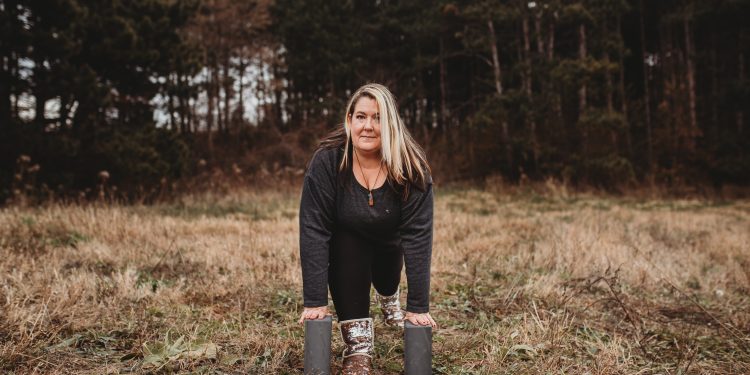by Amy Zellmer, Editor-in-chief
Yoga is a powerful tool for recovery after brain injury. Contrary to some beliefs, everyone can do yoga — you don’t need to be super flexible, have great balance, or even be able to stand up. The beauty of yoga is that every pose can be modified to accommodate anyone.
An important aspect of yoga is the breath. Connecting the breath to your body and flow, and getting oxygen flowing to your brain, is what makes it so powerful for recovery. Yoga is also a time to quiet the mind, letting anxiety and distracting thoughts drift away.
Lunge Pose (anjaneyasana) stretches the hips, thighs, gluteus muscles, and quadriceps, and opens the chest while improving balance, concentration, and core awareness. Sanskrit: Anjaneya — Lord Hanuman, divine entity of spiritual significance; Asana — pose.
This pose is gentle and relaxing, but as with any pose, if it hurts or causes major discomfort, do not continue.
Instructions:
- From standing: on an exhale, step your right foot toward the front of your mat. Stack your right knee over your right ankle. Lower your left knee to the floor. Keeping the right knee fixed in place, slide the left leg back until you feel a comfortable stretch in the front thigh and groin.
- Inhale and reach your arms overhead, lift your torso upright. Face your palms toward one another and soften your shoulder blades down.
- Draw your tailbone down toward the ground, lengthening your lower back and engaging your core.
- Stay here for a few breaths.
- To release, place your hands down on the mat, step your right leg back and gently come back to standing. Repeat on other side.
Modifications:
- For more stability, use blocks to help lift you higher (pictured) instead of reaching your arms up.
- Place a soft foam block or pillow under your back knee for cushioning.
- Be mindful of your neck and low back. Keep your gaze forward with your neck in neutral. Allow yourself a slight backbend if your low back will tolerate it.
If you are interested in learning more about yoga, check out
www.loveyourbrain.com and their yoga programs throughout the U.S. at partner studios, which are completely free to brain injury survivors and caregivers.
Amy Zellmer is an award winning author, keynote speaker, and TBI survivor and advocate. She is Editor-in-chief of The Brain Health Magazine, and hosts the Faces of TBI podcast series, as well as TBI TV on YouTube.











